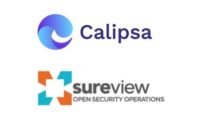ESA to Pursue Alarm Dispatch Reduction With Technology Adoption

ESA Board of Directors
IMAGE COURTESY OF ESA
The Electronic Security Association’s Board of Directors unanimously passed a resolution on Aug. 24 to support efforts to reduce false alarms through more efficient and effective notification methods.
One of the greatest threats to the electronic security and life safety industry is the high rate of false alarm dispatches. This threat can cause many problems, including jurisdictions to push for “non-response” or “verified response,” which would drastically alter the value and the operations of many security companies across the nation.
The ability to directly message customers when verifying alarm signals is a significant enhancement that the ESA Board supports.
“At ESA, we have a long history of working with our members, other associations and our public safety community to reduce false alarms,” said John Loud, ESA chairman and president of LOUD Security Systems. “Now, monitoring centers are investing in modern technology so that we, as an industry, can partner with them to create a better solution for communicating with our customers and as a result, reduce attrition by meeting our consumers where they are.”
“People tend not to answer their phone if the number is unknown and are more likely to respond to text or chat,” he continued. “By using group chat for verification, we're able to connect quickly with the customer and verify the alarm signal and in many cases, we can cancel the dispatch. By leveraging more effective communication methods, our monitoring center partners are more efficient, our public safety community will be responding to far fewer false dispatches and, ultimately, our subscribers are happier — which leads to lower attrition.”
The mission of ESA’s resolution is to encourage a mass adoption of this innovative alarm dispatch reduction technology, creating better communication with consumers in the way they connect during a potential emergency.
“I want to encourage our ESA members and all security integrators to start a dialogue about how this investment from monitoring centers could help them reduce their attrition and enhance their customer experience,” Loud said.
The ESA Board of Directors unanimously supported the resolution, stated in full here:
WHEREAS the electronic security industry has widely relied on voice communication as the primary method of communication when verifying alarm signals;
WHEREAS email is a broadly used communication method, but it is better suited for non-time sensitive communications;
WHEREAS the increase in unwanted robo-calling has resulted in increasing consumer reluctance to answer calls from unknown numbers, which delays or diminishes the effectiveness of multiple verification attempts of alarm signals to customers;
WHEREAS there is a need to expand beyond traditional telephone contact with responding parties and customers to reduce unnecessary alarm dispatches, which will benefit ESA members, customers, and responding public safety agencies; and
WHEREAS utilizing these alarm management best practices will likely improve customer satisfaction and reduce attrition;
THEREFORE, BE IT RESOLVED, The Electronic Security Association (ESA) Board of Directors supports reducing false alarms through more efficient and effective notification methods to our customers and first responder agencies in order to diminish unnecessary fines or other proscriptive measures by responding agencies such as non-response or verified response policies;
BE IT FURTHER RESOLVED, that the ESA Board suggests electronic security integrators, dealers and monitoring stations to use communication methods such as short message service (SMS), multimedia messaging service (MMS) when verifying alarm signals; and
BE IT FURTHER RESOLVED, that the ESA Board urges electronic security integrators, dealers and monitoring stations to adopt best practices when implementing communication methods to verify alarm signals.
In doing so, we will achieve:
- Faster notification and verification through the use of texting or chat
- Reduced attrition and increase customer satisfaction
- More efficient use of monitoring center resources
- Further the long-standing partnership and trust of the public safety community
- Improve use of public resources through the reduction of false dispatches
Looking for a reprint of this article?
From high-res PDFs to custom plaques, order your copy today!





